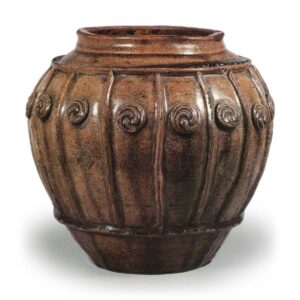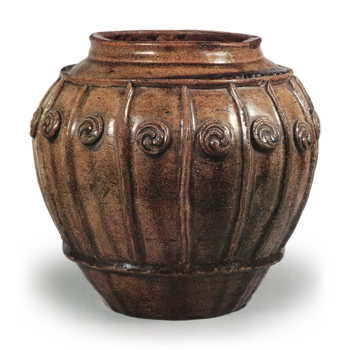
14th century
Height 22.4cm, Bore 13.4cm, Body 23.5cm, Bottom 11.6cm
Important Cultural Property
Umezawa Memorial Museum
This wide-mouthed jar is in the same lineage as the previously mentioned cinerary urn owned by monk Shinchikai, but it is richly decorated with a floating pattern and protruding bands, which are common in the late Kamakura period. It is slightly different from the severe form of celadon shukai-jars in that the neck of the mouth is slightly tilted inward and the inner bow at the waist is no longer visible, and it is considered to be from the end of the Kamakura period. The obi is triangular in cross section, as is often seen on Kosedo wares, with two upper and two lower obi and seventeen vertical obi tied between them.
In between each band, a three-way motif is applied one by one. The entire surface is glazed with a yellowish-brown color, but the glaze is a slightly oxidized ash glaze, and judging from the state of the intricate surface penetration, it is thought to have been handed down for a long time on the ground rather than excavated.



